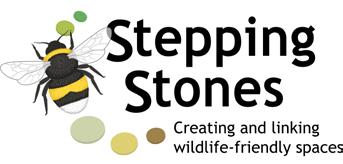Cudwell Meadow - an unusual plant community for South Shropshire Mike Carter
World’s End Wetlands, Church Stretton
wet meadows and alder wet woodland. British Geological Society records of boreholes sunk in 1961 indicate, in places, peat deposits of up to 4m in depth. The advent of the Shrewsbury to Hereford railway in 1845 to the east of the wetlands required several drainage ditches across the valley to speed the flow of water down to the Onny. Old photos from the late 19th, early 20th century suggest the wetlands had dried and become reasonable pasture. However in recent decades the ditches have silted up and blocked, with the area reverting to wetlands that regularly flood, to marshy grassland, rush meadow, swamp, and willow and alder scrub. These habitats are home to Water Vole, visiting Otter, many interesting species of invertebrate and amphibian and occasional water birds, including Snipe, Kingfisher, Little Egret, Grey Wagtail and a range of resident and migratory songbirds and raptors.
Church Stretton lies at the headwaters of Town Brook and Cound Brook. While only 500m apart, Cound Brook flows north through Coppice Leasowes Nature Reserve to join the River Severn at Cound, while Town Brook flows south to join the Onny and Teme, eventually joining the Severn at Worcester. Look at the OS map, or a satellite photo, of the Church Stretton valley and you will see an unbuilton patch just south of the town. These are known locally as the Stretton or World’s End Wetlands. This is 11 hectares of ancient wetlands fed by two catchments; to the west the immediate valley sides of the Long Mynd, to the east, the slopes of Ragleth Hill. In the middle of the valley lies the flat-topped Brockhurst Hill rising about 50m above the present valley floor. It looks like a glacial drumlin, but rather it is Longmyndian shale left isolated as meltwaters carved southwards through weaker strata. About 13,000 years ago a small glacial lake formed behind Brockhurst Hill and moraine debris.
The 11ha of wetlands are divided into a number of small fields belonging to 5 different landowners (see Figure 1). The Strettons Area Community Wildlife Group carried out flora and fauna surveys in 2016 coordinated by the Shropshire Wildlife Trust. This resulted in half the wetlands area (Fields 6 and 9) being designated a Local Wildlife Site. In 2017 the Strettons Wetlands Interest Group (SWIG) together with Shropshire Council built a boardwalk across the valley.
The lake in time silted and became a raised peat bog which through vegetation succession and human activity developed into the mixed habitats indicated on the 1840 tithe map: eel pools,
Cudwell Meadow (Grid Ref: SO449932) One field (Field 5) of about 1ha came up for sale early in 2020. SWIG joined with the Middle Marches Community Land Trust to launch an appeal to purchase the field. The appeal was successful in spite of covid lockdown, and purchase was completed late 2020. The field, known only as The Meadow on the tithe map, was renamed Cudwell Meadow after a spring higher on the Long Mynd which drains into the field. The field is a meadow by name only. For many years it has been seasonally grazed by sheep. Town (aka Quinny) Brook runs along the north edge of the field. In recent years to reduce flood risk to local properties,
Figure 1: World’s End Wetlands; Cudwell Meadow circled.
9








